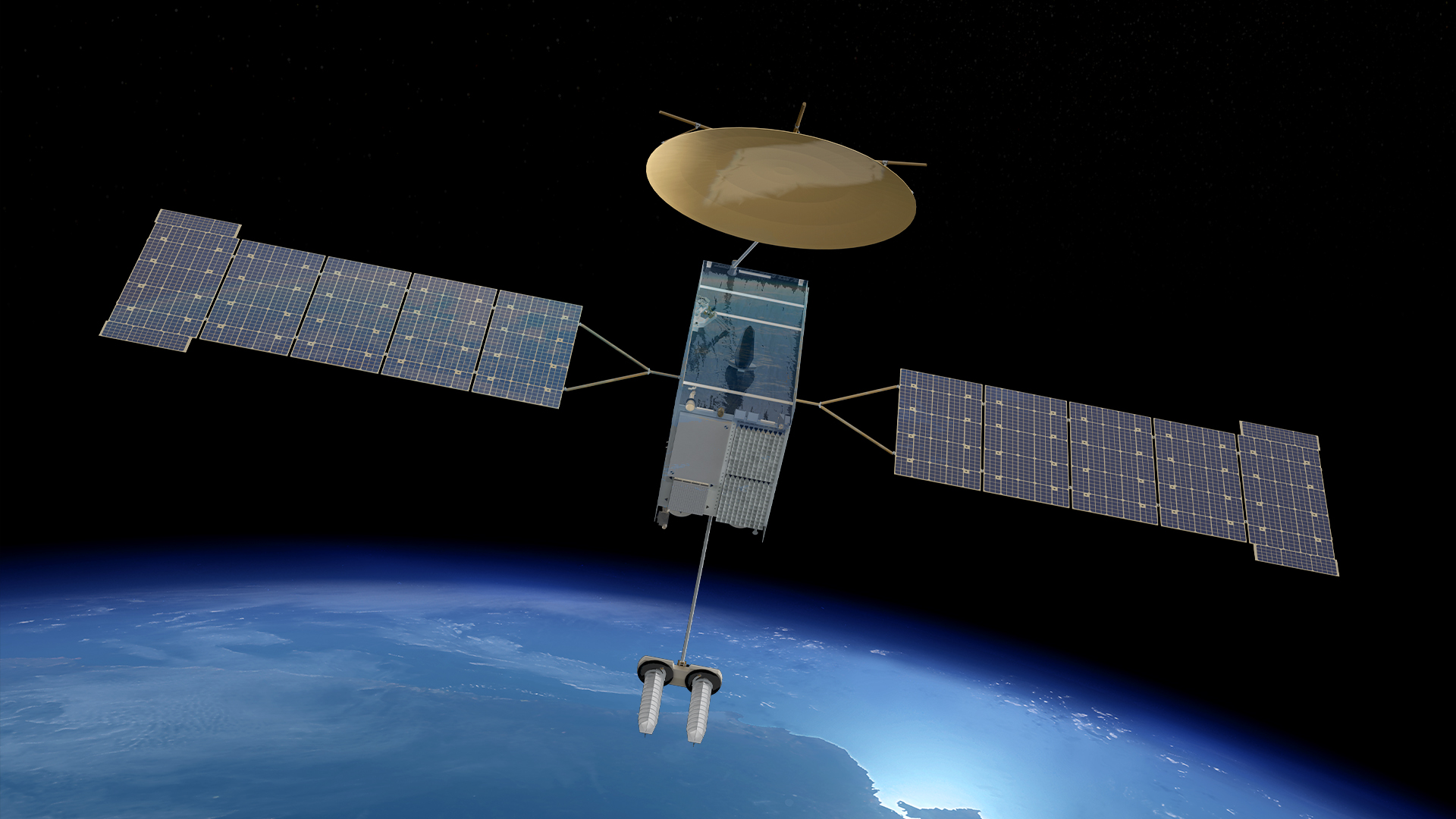Latest News
Australia Cancels Satellite Effort With Lockheed Martin to Prioritize Multi-Orbit Solution

Rendering of a JP9102 satellite. Photo: Lockheed Martin
The Australian Ministry of Defence on Nov. 4 terminated its procurement activity with Lockheed Martin for a single communications satellite in favor of pursuing multiple spacecraft that could provide a more resilient communications capability for its military.
Lockheed Martin’s Australia-based business in April 2023 was named the preferred bidder for the Australian Defence Satellite Communications System, that was called JP9102 and was intended to be launched into Geostationary Earth Orbit (GEO). Australia wants a sovereign satellite-based communications system for the Indo-Pacific region.
“With the acceleration in space technologies and evolving threats in space since the projects commencement, Defence has assessed that a single orbit GEO-based satellite communications system would not meet strategic priorities,” the ministry said. It also said that, “Instead of a single orbit solution, Defence must instead prioritize a multi-orbit capability increasing resilience for the Australian Defence Force.”
For now, the Ministry of Defence said its existing satellite communications capabilities meet its needs and the decision to cancel the JP9102 effort with Lockheed Martin Australia will allow it to “prioritize emerging needs, mitigate capability gaps and continue to support our transition to an integrated, focused force.”
In the commercial sector, U.S.-based SpaceX has populated Low Earth Orbit (LEO) with thousands of Starlink satellites that are being used by government and private entities, and individuals for communications needs. The U.S. Defense Department has also begun a missile warning and related communications program that involves a proliferated constellation of satellites in LEO.
Having hundreds and thousands of small satellites in LEO offers global coverage and resiliency against adversary attacks that might target orbiting spacecraft.
Citing its 2024 National Defence Strategy, the Ministry of Defence said it requires satellites to enhance intelligence, surveillance, reconnaissance, resilient communications, and counter emerging space threats. The ministry said its “Integrated Investment Program” has between $6 billion and $8 billion U.S. dollars to invest in space capabilities.
Get the latest Via Satellite news!
Subscribe Now